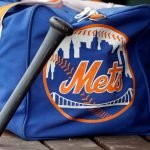Major League Baseball has long since entered an era when pitchers have seemingly every advantage. Even deliberate efforts by the league to give hitters a leg up have had only baby-step levels of success.
Well, it turns out that all MLB needed to do was accidentally shrink the strike zone.
Shrinking the zone was occasionally mentioned as a Hail Mary solution while the offense went kaput throughout the 2010s and into the 2020s, but it’s now happening in 2025. And the heck of it is that MLB didn’t even change the rules governing what the strike zone is.
As Jayson Stark, Ken Rosenthal and Eno Sarris of The Athletic reported, the league spent the winter negotiating new umpire assessment protocols with the Major League Baseball Umpires Association. They have a “buffer zone” for ball and strike calls in MLB’s evaluations that is smaller now, effectively giving umps less margin for error in how their calls are graded.
In theory, not exactly a major change. But in practice, it’s resulting in a smaller strike zone and, consequently, making the game a heck of a lot more entertaining.
The Zone Has Shrunk, and Benefits for Hitters are Real
Looking strictly at takes, here’s how the rate of strikes outside the zone and balls inside the zone have changed from 2024 to 2025:
- Strikes Outside Zone: 5.9 to 4.7 percent (lowest ever)
- Balls Inside Zone: 10.9 to 12.8 percent (highest since 2017)
This is not the best news for pitchers, catchers, and even front offices. One executive told The Athletic that the new zone makes life harder by influencing “personnel decisions, philosophies, everything.”
For hitters, though, the effect is what you’d expect. They’re making gains across the board, even if you restrict the comparison point to the last two Aprils:
- Strikeout Percentage: 22.5 to 22.1
- Walk Percentage: 8.7 to 9.0
- Batting Average: .240 to .242
- On-Base Percentage: .314 to .316
- Slugging Percentage: .386 to .392
As the weather warms up and hitters settle into the season, it’s all but guaranteed that the league’s AVG, OBP and SLG will keep going up. And unless MLB and the MLBUA get cold feet and reinstitute the old buffer zone, there’s little reason to think the strikeout and walk rates will reverse course.
The new zone is, after all, closer to what the strike zone is supposed to be. As The Athletic noted, ball-strike accuracy is the highest it’s been since the Statcast era began in 2015.
This Beats Even the Offensive Jolt of 2023
Whether or not the league intended for the zone to shrink, this is the second bone MLB has thrown to hitters just in the last three seasons.
Two years ago, it went all-in on a revolution by introducing the pitch timer, bigger bases and limits on shifts and pick-offs, and the offensive environment was an immediate beneficiary. Relative to 2022, all three triple-slash categories and stolen bases went way up in 2023.
From an aesthetic standpoint, however, baseball still maintained portions of, oh, let’s call it the “Ominous Cloud of Boringness” that had been hanging over it.
Though there were more hits in 2023 than 2022, that was partly due to an increase in home runs. And as with most bad habits, strikeouts proved hard to kick as they rose in frequency.
There were ultimately 24.26 balls in play per game that year, only edging 2020 and 2021 to avoid MLB’s all-time low. And the catch with the rise in stolen bases is that they were basically automatic, with the caught-stealing rate falling to an all-time low of 19.8 percent.
That there are now 24.41 balls in play per game in 2025 is nothing if not a sight for sore eyes. And when you also factor in the rise in walks and a decrease in home runs, what we’re getting is more opportunities for action to happen.
More frequent baserunners mean more chances to steal bases, and those are not being squandered. There’s currently an average of 0.81 steals per game, marking only the second time since 1920 that baserunners have been swiping bags that often.
Let us not forget, though, that caught thefts are also exciting. And they are also more frequent in 2025, when catchers are gunning down 21.3 percent of would-be thieves.
Caught-stealings alone doesn’t create a defensive renaissance, but it does seem good defense is now being treated as less of a nice-to-have and more of a must-have. Defensive efficiency—that being the rate at which balls in play are converted into outs—is up from .691 in 2023 to .699 this year.
This Party Will Soon (Sort Of) Be Crashed
This conversation comes with a twist, and it concerns how the strike zone will soon be partially automated.
The league is fresh off testing its Automated Ball-Strike System—otherwise known by its acronym of “ABS” and its moniker of “robot umps”—in spring training, where it was well-received. The next step is implementing it in regular-season games, and MLB commissioner Rob Manfred hopes that will happen as soon as next year.
Whenever it comes, though, the ABS stands to erase some of the hitters’ newfound gains.
One can assume as much from how there’s been a higher rate of missed calls in the zone than outside of it. Further, the ABS challenge system favors the defense over the offense. Pitchers and catchers combined for a 54.4 percent success rate on challenges this spring, compared to a 50.0 percent rate for hitters.
Yet even if these signs point to a future in which pitchers and catchers are correcting umpires more frequently than hitters are, it’s hard to imagine the cat going all the way back in the bag.
The league made it clear in 2023 that it wants more offense, so it presumably isn’t upset about what’s happening in 2025, even if it is a quote-unquote unintended consequence. If any pitchers are hoping for the zone to re-expand, they’d better not hold their breath.
On the other side of the coin, the environment for hitters remains far from friendly. The league’s .242 batting average marks progress relative to 2024, but it’s still low by early-season standards. Further, this year is on track for the eighth-highest strikeout rate ever recorded.
Yet, along with the new rules from two years ago, the shrunken strike zone has nonetheless helped to push Major League Baseball’s gameplay closer to equilibrium. There are a ton of talented pitchers, hitters and fielders in the game, and all three have a real chance of grabbing the spotlight at any given moment.
You might say that the state of the game is much like the state of the strike zone: Closer to what it should be.











